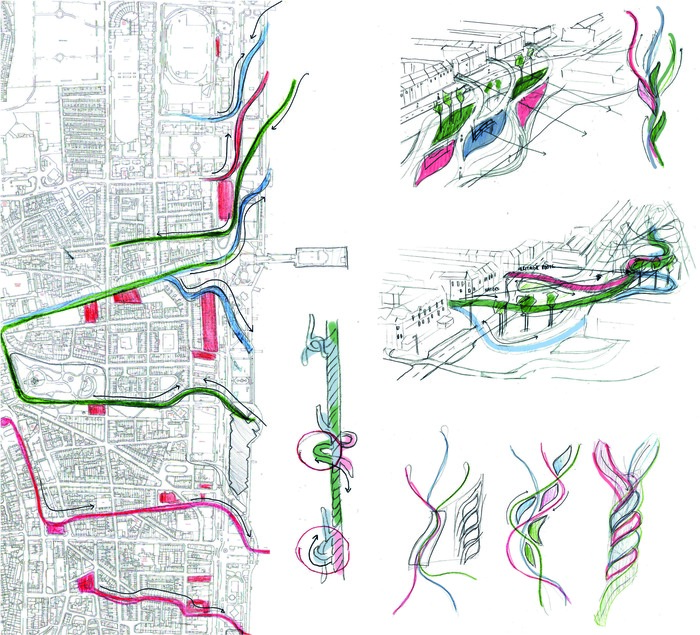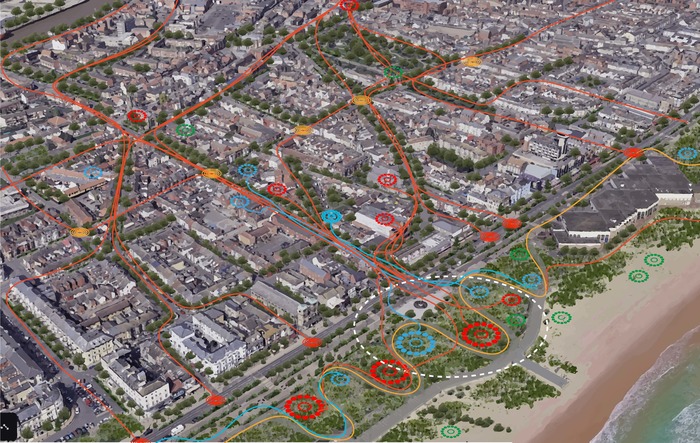Future Place 2019 Great Yarmouth Case Study
Local Authority: Great Yarmouth Borough Council
Area: Coastal location in East Norfolk
Administration: Conservative led council, 1 Conservative MP
Population: Great Yarmouth, 99,370 Norfolk 859,400
Demographics: Benefit/Universal Credit claimants aged 16-64 years are double the national average
Planning: Local plan adopted in 2015; new Development Plan Document covering housing allocations due to be adopted 2021
Place Assets: ‘The Golden Mile’ beach attracts c. 6 million visits per annum. 19 Conservation Areas and numerous listed buildings
Environment: On the mouth of the River Yare; gateway to the Norfolk Broads; focus of England’s offshore energy sector
Download 'Greening Great Yarmouth' (PDF, 24.3MB).

“The Future Place programme opens up to a host of specialist expertise and innovators interested in our place and its challenges, equipping us to develop our network, leadership and capacity to tell a more confident public story.” - Great Yarmouth Council
Great Yarmouth
Great Yarmouth has historically been shaped by seasonality and extremes. At one point the port was the fifth richest town in the country with a thriving fishing industry and domestic holiday trade, which is reflected in its legacy of attractive heritage assets and thriving summer tourist industry.
It is a patchwork of coastline, quayside and urban zones that layers sectors and industries on its peninsula, including leisure and tourism, marine energy, engineering and advanced manufacturing, and port logistics. The rise of the offshore wind industry has brought renewed economic opportunity.
Vision for Great Yarmouth
Great Yarmouth’s vision is to encourage economic growth by attracting and retaining further visitors and skilled workers, regenerating the historic town centre and better aligning the tourism, culture, and heritage offers with the future of the town as the national capital for offshore energy.
The Future Place brief was to undertake an urban design and historic area analysis, and then develop an imaginative strategy for the improvement of the public realm and a feasibility study for the seafront. The principal aim was to put ‘place’ at the heart of Great Yarmouth’s future regeneration.

Challenges
Addressing Great Yarmouth’s regeneration challenges, the Future Place partners worked to identify and supply critical inputs to redress the following:
- Creating a context in which investors have confidence
- Making the most of existing heritage and culture
- Securing high quality development that meets the opportunity of the place
- Establishing the town as the national centre of excellence for renewable offshore energy
- Rationalising the seafront retail offer and making better use of public space
- Designing in flood resilience
���������� Chartered Practice
is a multi-disciplinary design studio with an emphasis on placemaking. The practice was selected for their visionary but achievable approach which demonstrated a sound understanding of the issues Great Yarmouth was seeking to address. They also brought a track record of practical experience of delivery on relevant projects.
Tonkin Liu’s design approach starts with looking at culture and nature to develop their thinking and find a story about a place. Their storytelling methodology enables the creation of iconic and enduring designs with an accessible and relatable identity.

Placemaking Strategy
Tonkin Liu followed the methodology that they have developed to understand the underlying condition, history and folklore of a place: ‘Asking, Looking, Playing, Making’. Following an initial public consultation exercise to identify the communities’ aspirations, ideas drawn from the characteristics of place were shaped into a series of concepts - to intensify activity, make connections and bring together a ‘Green Great Yarmouth’ design response rooted in its locality.
Key aspects of the feasibility study and spatial framework that emerged were: stitching the town centre to the seafront by opening vistas towards the sea and tree-planting routes, and unlocking awareness of Great Yarmouth’s heritage and cultural assets using public art and legible way finding.
It is envisaged that through this place-based approach, connections between communities, old and young, residents and visitors will be reinforced while also bringing the year-round economy towards the seafront.
Lessons Learned
- Work at a ‘larger than local’ level to problem solve
- Derive a compelling brand from local culture and conditions to make a place investible
- Invest in a public realm strategy shaped around visual, physical and emotional connections
- Ground public realm interventions strongly in local engagement
- Deploy high quality, visionary design to raise expectations for an area, challenge existing perceptions and help illustrate the potential for transformational market change

Impact of Future Place
Engagement with the Future Place programme reinforced the value of the placemaking approach and opened new methods and ways of looking at Great Yarmouth centre which will inform future planning, masterplanning and placemaking.
It is envisaged that the Future Place project will influence the 10-year Tourism and Culture Strategy and there is now a desire to use Tonkin Liu’s conceptual strategy as a catalyst for a wider, deliverable Seafront masterplan.
Participation in the programme has also brought a new profile to the town and its regeneration opportunities and issues. Specific benefits included building relationships at senior level with national partner bodies and invitations to speak at high-profile national events.
With thanks to Anna Liu, Mike Tonkin, Alex Woolgar and Hannah Anderson at Tonkin Liu. Julia Devonshire and Anthony Moore at Great Yarmouth Council
